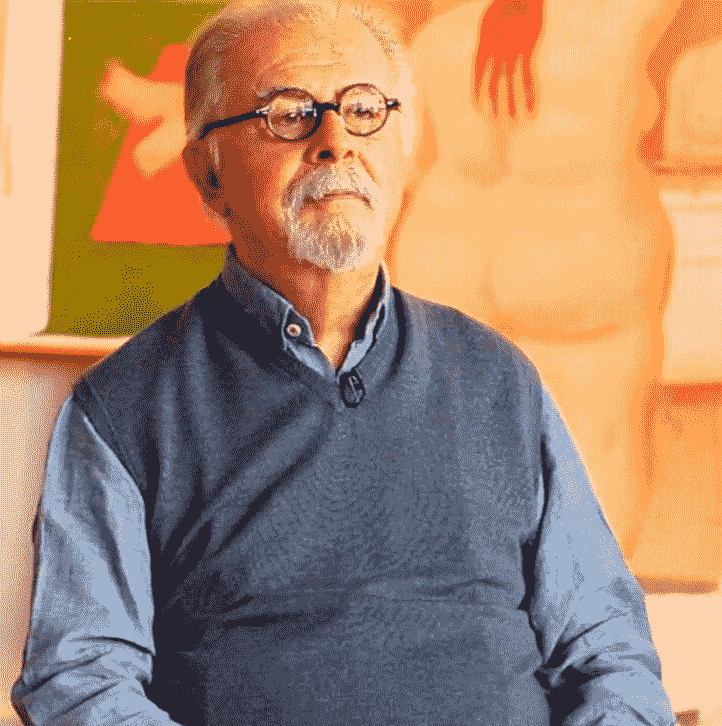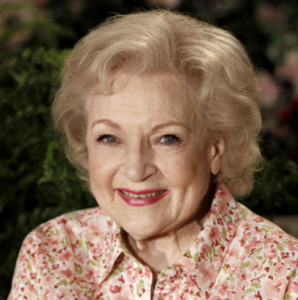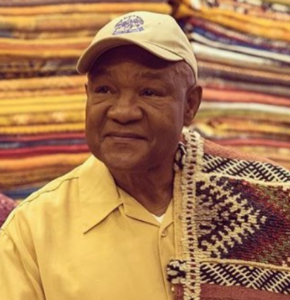Fernando Botero: Celebrating the Life and Legacy of a Visionary Artist
Renowned Colombian artist Fernando Botero, acclaimed for his distinctive style characterized by plump, inflated, and often satirical figures, has passed away at the age of 91.1
His death occurred on September 15 at a hospital in Monaco, where he had been battling pneumonia and Parkinson’s disease, as confirmed by his close friend, Mauricio Vallejo, co-owner of the Art of the World gallery in Houston.
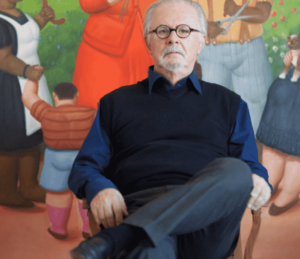
Botero’s artistic legacy extends beyond the canvas as he ventured into creating monumental sculptures that adorned prominent boulevards worldwide. His work captivated audiences with its whimsical charm and insightful satire. Botero’s contributions to the art world left an indelible mark, earning him a revered place in the annals of contemporary art.
Table of Contents
The Artistic Odyssey of Fernando Botero
Fernando Botero was born on April 19, 1932, in Medellín, Colombia. His early years were marked by a deep fascination with art, and he began his formal art education at the age of 12 when he enrolled at the Escuela de Bellas Artes in Medellín.
His talent was evident from the start, and he quickly gained recognition for his exceptional skill in drawing and painting.
View this post on Instagram
In the 1950s, Botero moved to Bogotá, the capital of Colombia, to further his artistic pursuits. It was during this time that he honed his signature style characterized by the use of exaggerated, voluminous forms. His subjects, often portrayed with exaggerated proportions, became instantly recognizable, earning him a place in the art world that was entirely his own.
Satire and Social Commentary
Botero’s work was not limited to merely depicting rotund figures; it carried a deeper meaning. His art was a reflection of the world around him, and he used satire to comment on the human condition, politics, and society. Through his satirical lens, Botero explored themes such as power, greed, and the absurdity of human behavior.
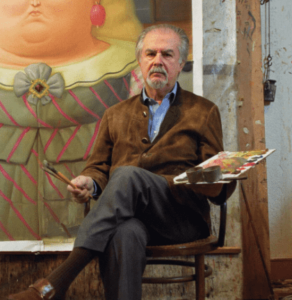
One of his most famous series of paintings and sculptures focused on the horrors of war and violence. Botero’s depictions of conflict, such as the notorious “Abu Ghraib” series, offered a powerful critique of the brutality of war and the abuse of power. His ability to convey profound messages through humor and satire was a testament to his artistic prowess.
Also Read: How Did Wellesley Eric Laplaca Die? Death Cause And Obituary Explored
Remembering Fernando Botero: A Legacy of Art and Creativity
Fernando Botero, the renowned Colombian artist known for his unique style characterized by large, exaggerated volumes, passed away on a somber day, leaving behind a legacy that continues to inspire and captivate art enthusiasts worldwide.2
Early Life and Artistic Beginnings
Fernando Botero was born in Medellin, Colombia, in 1932, into a world that would soon bear witness to his extraordinary talent. From a young age, he displayed a keen interest in the world of art, foreshadowing a career that would revolutionize the way we perceive the human form.
Botero’s artistic journey began as an illustrator for newspapers and magazines, where he honed his skills in capturing the essence of everyday life. However, he yearned for more, desiring to deepen his understanding of art and its timeless masters.
Artistic Evolution
In pursuit of artistic enlightenment, Botero embarked on a transformative journey, leaving his homeland for Bogota and later venturing into Europe. It was in Europe, amidst the works of the old masters, that he found inspiration that would shape his artistic identity.
Botero’s signature style, known as “Boterismo,” emerged as he delved into painting people and figures in a distinctive manner characterized by their exaggerated, voluptuous forms. These larger-than-life depictions were not intended as caricatures or criticisms; rather, they were a profound expression of his deep admiration for the richness of life itself.
A Legacy of Art and Generosity: Fernando Botero Obituary
The art world mourns the loss of a true visionary, Fernando Botero, whose passing leaves behind not only a rich artistic legacy but also a testament to his boundless generosity.
Beyond the canvases and sculptures that brought him fame, Botero’s commitment to sharing art with the world, regardless of social or economic barriers, is a legacy that will continue to inspire generations to come.
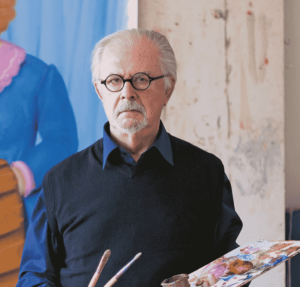
A Life Shared with Sophia Vari
Fernando Botero’s journey through life was significantly enriched by his marriage to Sophia Vari, a Greek sculptor. The two artists joined their lives in matrimony in 1978, forming a partnership that spanned decades. Their union was a harmonious blend of artistic creativity and shared passion, creating an environment where their talents could flourish together.
In addition to his partnership with Sophia Vari, Botero was a father to three children from his previous marriage to Gloria Zea. Gloria, a former Colombian culture minister who passed away in 2019, shared in Botero’s deep appreciation for art and culture. Their legacy lives on not only through their children but also through Botero’s enduring commitment to the arts.
A Philanthropic Visionary
While Botero’s art captivated audiences worldwide, his generosity extended far beyond his canvas. He possessed a profound desire to make art accessible to all, transcending the boundaries of privilege and wealth. This philanthropic vision led him to donate hundreds of his own works to museums in Colombia and around the globe.
Anunciando: “colgará en noviembre próximo en Nueva York los cuadros de su particular vía crucis”. DIARIO EL TIEMPO http://t.co/X0a0XRRU
— Fernando Botero (@FernandoBotero_) October 13, 2011
Botero’s generosity didn’t stop with his own creations. He also shared pieces from his personal collection by other artists, further enriching the cultural landscape of museums fortunate enough to receive his gifts.
His belief in the transformative power of art drove him to ensure that the beauty and wonder of artistic expression were within reach of everyone, irrespective of their socioeconomic status.
Also Read: Elijah Holt (Obituary): Death Cause, Accident And More About The Grand Rapids Resident
Early Years: The Artistic Journey of Fernando Botero
Fernando Botero Angulo, the celebrated Colombian artist known for his distinctive “Boterismo” style, embarked on his remarkable artistic journey from humble beginnings. Born on April 19, 1932, in Medellín, Colombia, Botero’s early years were marked by a fascination with the matador’s world before he chose to follow his true passion, art.
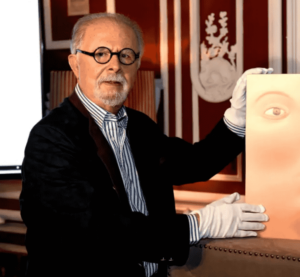
A Youthful Beginnings
In his youth, Fernando Botero Angulo spent several years at a matador school, a world filled with drama, courage, and spectacle. However, the allure of the bullring gradually faded as he discovered his true calling: art. It was in the world of canvas and colors that Botero would find his lifelong purpose and leave an indelible mark on the art world.
Artistic Debut
Botero’s artistic talents began to manifest at a young age. In 1948, at the age of 16, his paintings made their debut in exhibitions. This early recognition hinted at the prodigious talent that would soon captivate audiences worldwide. Just three years later, in 1951, Botero held his first one-man show in Bogota, marking a significant milestone in his budding career.
Botero’s early work bore the unmistakable influence of various artistic and cultural sources. His Colombian heritage played a role in shaping his artistic sensibilities, with pre-Colombian and Spanish colonial art leaving a lasting impression on his creative expression. These influences can be seen in the rich colors and themes that would become hallmarks of his later work.
Another pivotal influence on Botero’s early art was the political murals created by the renowned Mexican artist Diego Rivera. These murals were not just works of art but powerful social and political statements. Botero’s exposure to Rivera’s work would later inspire him to use his art as a means of conveying messages and reflections on the world around him.
The Early Career of Fernando Botero: A Journey to Artistic Mastery
Fernando Botero’s journey from a young, aspiring artist to an internationally renowned figure in the world of art is a testament to his unwavering dedication and talent.
A Modest Beginning
In 1948, at the tender age of 16, Fernando Botero took his first steps into the world of art when his work was exhibited in a group show alongside other artists from his region. This initial exposure marked the beginning of what would become a prolific and illustrious career.
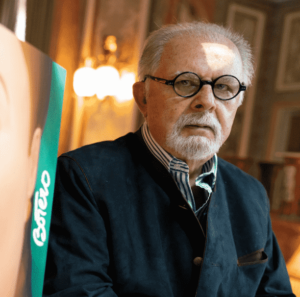
Diversifying Talents
In the following years, Botero explored various avenues to sustain his passion for art. From 1949 to 1950, he took on the role of a set designer, showcasing his versatility and creativity beyond the canvas. This period allowed him to experiment with different artistic forms, honing his skills and expanding his artistic repertoire.
Relocation to Bogotá
- The year 1951 marked a significant turning point in Botero’s career as he made the crucial decision to move to Bogotá, the vibrant capital of Colombia. This move was pivotal in providing him with greater exposure to the art scene and a platform to further develop his craft.
- As he pursued his artistic ambitions, Botero also faced the practicalities of life. To support his artistic endeavors, he worked as a newspaper illustrator, harnessing his artistic talents in a commercial setting. This period of juggling both creative and professional responsibilities shaped his work ethic and determination.
- Botero’s commitment to his craft extended to his academic pursuits. He attended the San Fernando Academy, where he had the opportunity to refine his skills and deepen his understanding of art. This academic foundation would prove instrumental in the evolution of his unique style.

- During this period, Botero’s art began to take shape, influenced by a myriad of factors. The Pérez Art Museum Miami’s acquisition of one of his early still life paintings, featuring apples, exemplifies his fascination with European art historical movements and the influence of 20th-century painters. This acquisition serves as a testament to the enduring appeal of Botero’s early work.
- In a moment that marked the transition from aspiring artist to established talent, Fernando Botero held his first one-man show at the Galería Leo Matiz in Bogotá. This exhibition, which took place only a few months after his arrival in the city, was a milestone that showcased his growth and artistic maturity.
Read More: How Did Cody Nelson Die? Bradford Contractors Employee Death Cause And Obituary Explored
